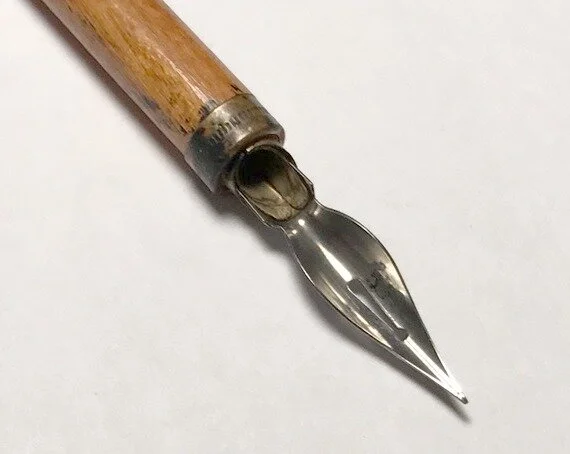Enduring Influences Part 01
As mentioned in my previous post, of all my interests and influences the two which have stayed with me from childhood to the present are Art and Film.
Jack Kirby (1917-1994)
The Art Influence.
While initially not seeing a great deal of artistic influence in my childhood, when I look at those years now I see dozens of things that nudged me in that direction.
Some are obvious as I’ve mentioned previously. Especially comics. When I look at my favorite comics I’m struck by how amazing some of the artists were.
I was absolutely a Marvel comics fan. The characters created by Marvel seemed, to me, to be much more compelling than any other comics published at that time. The characters often dealt with commonplace, personal problems that I could relate to, (especially the first few years of Spider-Man as brought to life by Steve Ditko).
Steve Ditko (1927-2018)
My copy of Creepy Magazine #2 (1965).. Published January 1965. Cover painting by Frank Frazetta.
My earliest favorites were Jack Kirby 1917-1994, (who drew Thor, Fantastic Four, X-Men, Avengers, Iron-Man and too many others to mention) and Steve Ditko 1927-2018, (who primarily drew Spider-Man and Dr Strange).
Frank Frazetta (1928-2010) Working on the cover of Eerie #2
Although there were many other comic book artists at the time, these two were by far my favorites. I was blissfully enjoying the comics they drew, utterly unaware of the many extraordinary artists not working for Marvel.
This all changed when a friend introduced me to comics by a company named Warren Publishing. Sadly this company ceased to exist in 1983 and should not be confused with the current Warren Publishing.
The main comic published by Warren, at least at this time, was “Creepy Magazine.” This was soon followed by Eerie Magazine and Vampirella Magazine, also from Warren Publishing Company. There were four things that immediately differentiated them from the typical comic.
First, their size. They were significantly larger than normal comics, more the size of a magazine. In fact my friend and I didn’t refer to them as comics, instead saying “Creepy Magazine.”
Second, they were in black and white. Rather than a negative, this allowed the printing of ink washes and beautiful gradations of values not seen in other comics.
Third, the covers were usually paintings. Of issues #2 - #17 of Creepy Magazine, eleven of them had striking cover paintings by Frank Frazetta, (1928-2010).
Fourth, the issues were not approved by the “Comics Code Authority” which most traditional comics adhered to. This meant they could be much edgier, both in story and artwork.
Lon Chaney Jr. as “The Wolfman” (1941) Universal Pictures.
And boy, were they dramatically different. As an example, look at a story from Creepy #1 illustrated by Frank Frazetta called “Werewolf!”. Readers now would undoubtedly have difficulty really appreciating how groundbreaking it was. Up until this story, to the best of my knowledge, werewolves had been depicted pretty much in the same way as in the 1941 Universal Pictures film “The Wolfman.”
The first page of the story “Werewolf” by Frank Frazetta from Creepy Magazine #1 (1964).
The first page, was pretty awesome, but when I saw the first full shot of the werewolf I was stunned.
In my wildest dreams I’d never imagined a werewolf like this. And once I saw it, I knew I’d never accept the old depiction again.
The reveal of the werewolf from Frank Frazetta’s “Werewolf” Creepy Magazine #1 (1964).
This was simply the most amazing story illustration I’d ever seen. It wasn’t just that it was a beautiful rendering, what really stunned me was that Frazetta took a character that I’d seen again and again, in multiple films and comics, and completely re-imagined that character in a way that immediately resonated with me as the way that creature simply had to be.
To this day, decades later, when I’m trying to tell someone why comic illustrations are so amazing and affect me so deeply, I will show them this story.
And I will sometimes do this in the middle of a conversation about artists like John Singer Sargent, Vermeer, Monet or N, C, Wyeth.
Here are some links for anyone who wants to read more about Frank Frazetta.
A link to what appears to be the official Frank Frazetta site;
http://frankfrazetta.net/
https://www.illustrationhistory.org/artists/frank-frazetta
“Duel of the Monsters” art by Angelo Torres, Story by Archie Goodwin. Creepy #7 (1966)
While the story by Frank Frazetta definitely caught my eye initially, he was by no means the only amazing artist I discovered in the pages of this magazine.
As I thumbed through the issues I also saw work by Angelo Torres, Reed Crandall and Al Williamson. These were all stunning artists, none of whom I’d ever heard of before.
Art by Al Williamson
“Vampires Fly at Dusk” Art by Reed Crandall, .story by Archie Goodwin. Creepy Magazine #1 (1964).
These extraordinary illustrators served as a bridge to so many other artists, both in and out of the comics “field,” that I can’t begin to name them all. But, because of my eyes being opened by these wonderful artists, I was quick to notice, appreciate and learn from masters such as Joseph Clement Coll, James Allen St. John, Heinrich Kley and Alex Raymond to name only a few.
Any parent who throws away comic books, especially if their children show an interest in art, (or writing), is doing them a tremendous disservice.


